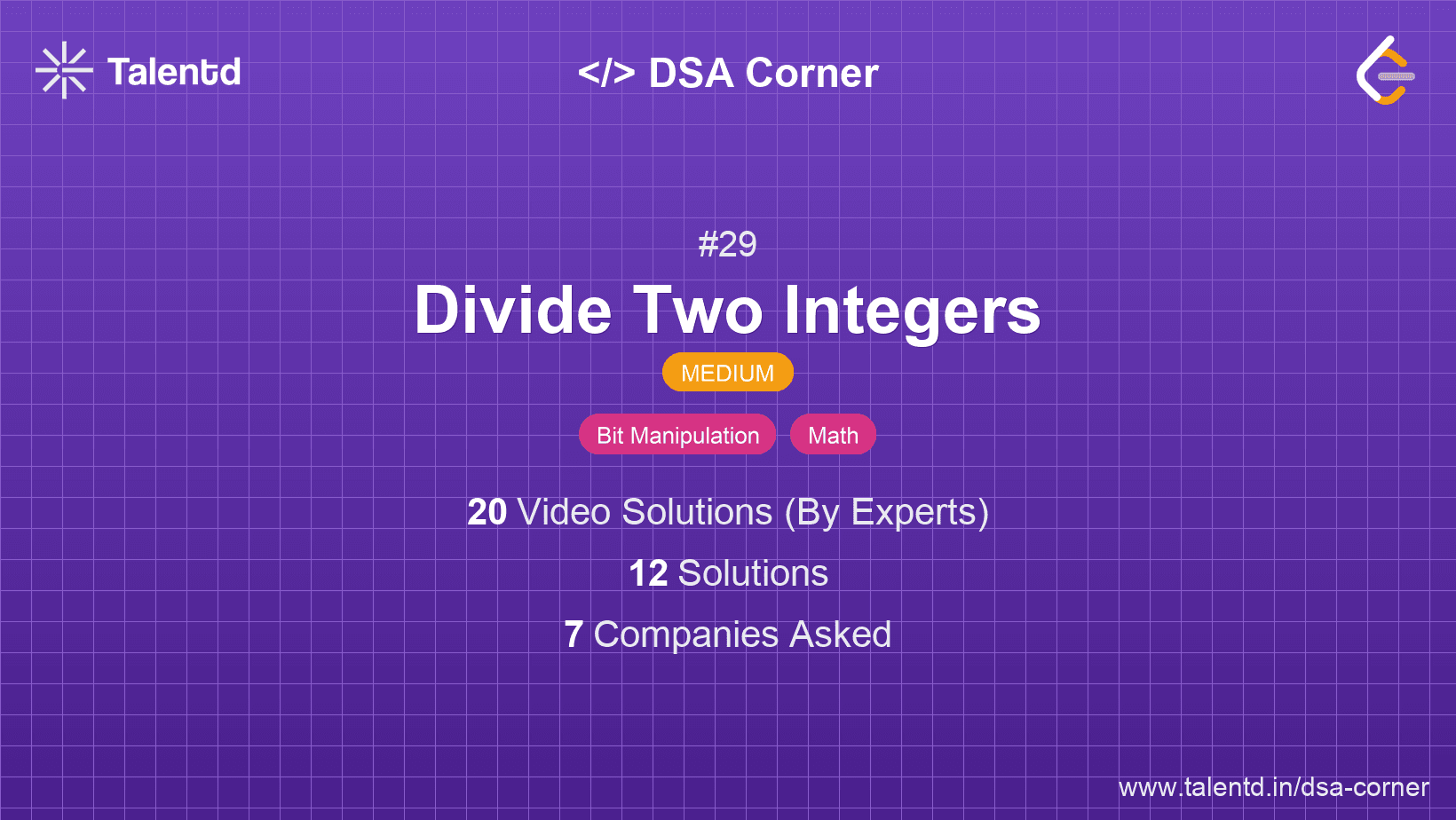
Sponsored
Sponsored
This approach uses repeated subtraction to calculate the quotient. The idea is to keep subtracting the divisor from the dividend until the dividend
Time Complexity: O(n), where n is the result of the division. This can be inefficient for large numbers.
Space Complexity: O(1), as no extra space is used.
1#include <climits>
2
3int divide(int dividend, int divisor) {
4 if (divisor == 0) return INT_MAX;
5 if (dividend == INT_MIN && divisor == -1) return INT_MAX;
6 int sign = ((dividend < 0) ^ (divisor < 0)) ? -1: 1;
7 long long ldividend = abs((long long)dividend);
8 long long ldivisor = abs((long long)divisor);
9 int quotient = 0;
10 while (ldividend >= ldivisor) {
11 ldividend -= ldivisor;
12 ++quotient;
13 }
14 return sign * quotient;
15}The C++ solution follows the same logic as the C implementation. It utilizes the long long type for the dividend and divisor to prevent overflow issues when converting to absolute values. The loop continually subtracts the divisor from the larger dividend countingly till the dividend is smaller than the divisor and then returns the correctly signed quotient.
Bit manipulation provides an optimized method to divide without causing repeated subtractions. By efficiently finding how many times the divisor can be shifted left (multiplied by two) in the dividend range, we can ascertain parts of the quotient to sum incrementally. This halves the number of operations compared to repeated subtraction.
Time Complexity: O(log n), where n is the approximate number of bits in the dividend with respect to bit manipulation.
Space Complexity: O(1), as shifts occur without additional structures.
1In JavaScript, bit manipulation functions by using typed numerals and management within local allocated bounds. Intake operations facilitate our transitional checks to bit-align qualified dividends to discover matching compiler deconstructed mathematic sequences ends.